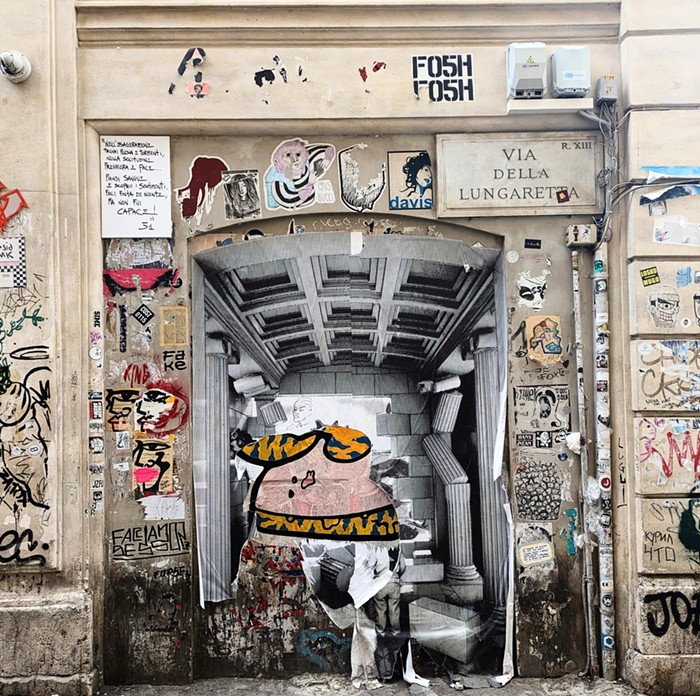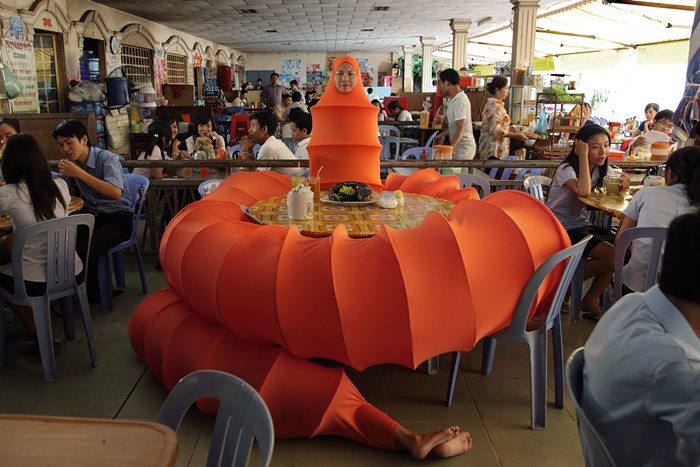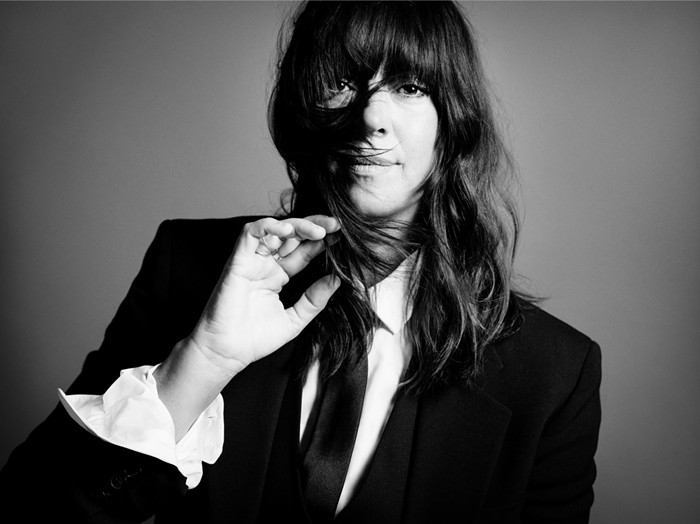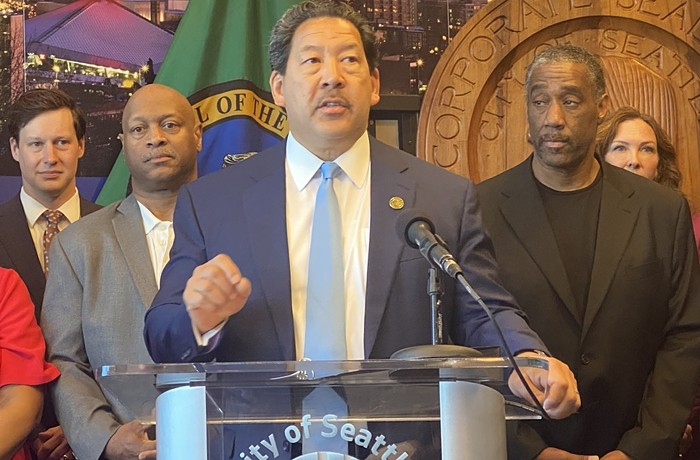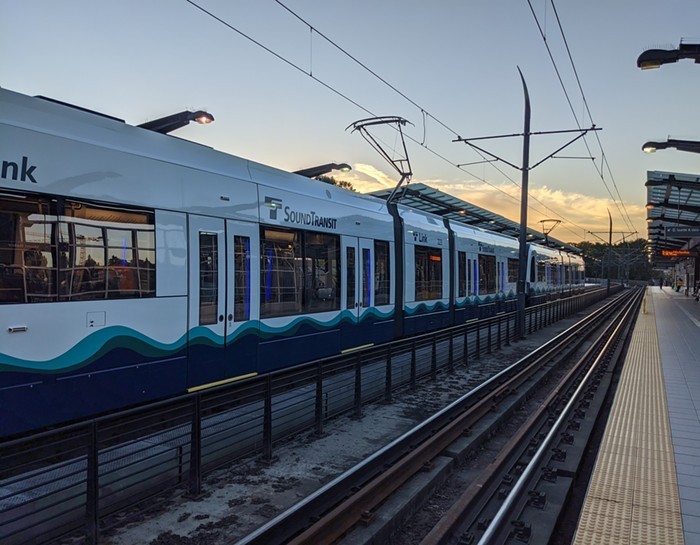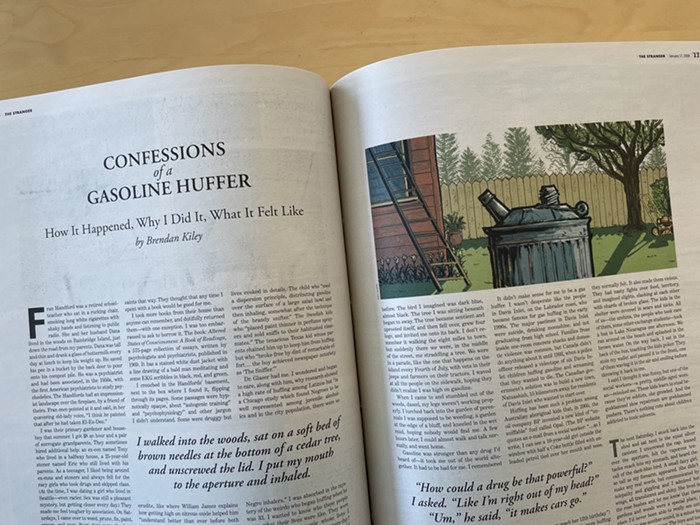Right now, there is a device stationed at the northern edge of the Olympic Sculpture Park that looks, at first glance, like one of those vintage tourist viewfinders where you pay a quarter to look through a binocular telescope. But instead of offering glimpses of the Olympic Mountains or the crystalline waters of Elliott Bay, this device is loaded with collaged images featuring artist and community activist Charhyse "Chimaera" Bailey in poses that resonate with whole histories of devotional art—hands outstretched to the sky or clasped in prayer.
This is Latent Home Zero, a site-specific temporary installation by Tacoma-based artist Christopher Paul Jordan, the recipient of a recent Neddy Award. He has also been gaining recognition as a muralist, educator, and activist.
"I started out as a digital artist before I learned how to draw," says Jordan. "I feel like there's this strong high-tech bias to work that's interactive, and I feel like we go higher tech than we need to to create certain experiences. For my generation, if we see an image, 90 percent of the time it's a moving image. But when you see a still image, frozen in time, it feels more like a memory."
The idea of memory is closely linked to that of latency—the gap between what something is and what it is to become. For the viewfinder images, Jordan has staged photographs contextualizing the bodies of water that surround Tacoma within a cosmological framework inspired by Yoruba ritual. These photos, in turn, are framed by images documenting the salvage yard Jones Glass—one of the oldest black-owned businesses in Tacoma's rapidly gentrifying Hilltop neighborhood.
Equal parts historian and visionary, Jordan uses the overlapping histories of land use, urban planning, and displacement in Tacoma as a microcosm to address the whole history of black migration across the United States. "We've been everywhere," says Jordan. "Urban space, rural space, but with every generation comes a new form of displacement, mass migration, and exclusion. Take a step back, how do we take agency of how we construct our belonging away from our homeland?"
The viewfinder itself harks back to a certain kind of engagement with the landscape: one infused with a colonizing, imperialist gaze that situates itself as "objective" and conditions us to believe that surveying land is an apolitical process. Latent Home Zero subverts the usual function of binoculars, making them a site of introspection rather than observation. The collaged images are alternated with a distorted view of the actual landscape, like the prism of memory and cultural assumptions.
Latent Home Zero is part of an ongoing project that will culminate in Jordan's first solo exhibition, Latent Home, scheduled to open this November at the Kittredge Gallery at University of Puget Sound in Tacoma. Meanwhile, Seattle audiences can get a glimpse into Jordan's process by peering through the viewfinder installed at Olympic Sculpture Park through October 2.



